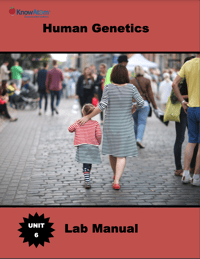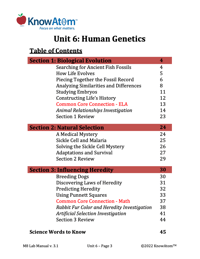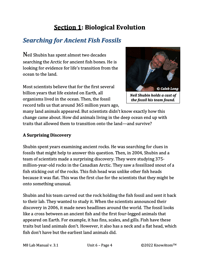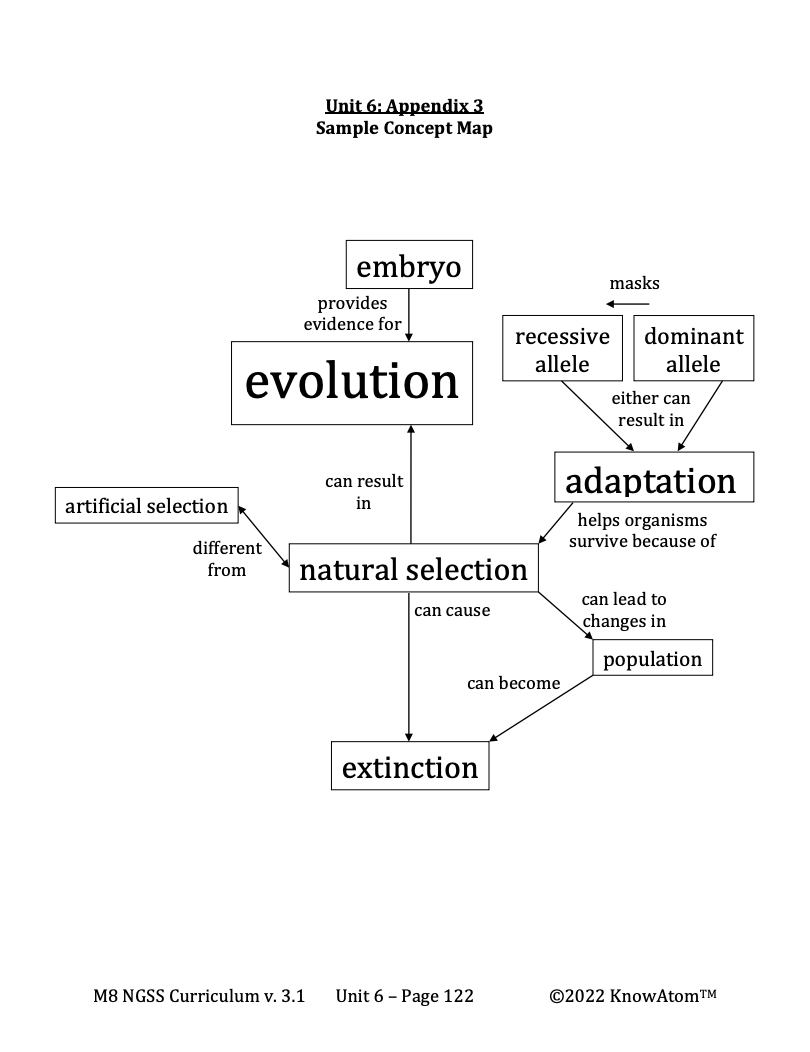The science background section gives teachers more in-depth information on the phenomena students explore in this unit. Below is an excerpt from this section on heredity and traits.
Predicting Heredity
Austrian biologist and monk by the name of Johan Gregor Mendel developed a method for predicting heredity. He figured out how to predict inheritance by conducting experiments with pea plants. He focused on seven traits: plant height, pod shape and color, seed shape and color, and flower position and color.
When he bred a yellow pea with a green pea, he got all yellow pea offspring. However, when those yellow offspring were bred together, the green peas appeared. For every three pea plants, there was one green pea plant. He saw the same thing when he focused on height. He bred tall pea plants with short pea plants. The offspring were all tall. He then crossed those tall pea plant offspring with each other, and he got three tall plants and one short plant. He repeated this experiment many times, and he always got the same ratio: 3-1.
This ratio led him to coin the term “dominant” and “recessive” when describing traits. In the case of the pea plants, Mendel determined that tallness is a dominant trait because it showed up in all of the first generation plants and 75 percent of the second generation plants (the same 3-1 ratio). Because dominant alleles mask recessive ones, we can’t tell what a person’s genotype is just by looking at them. A genotype refers to an individual’s genetic makeup. Instead, we see their phenotype, which is how a trait is expressed. For example, your specific eye color is a phenotype.
Using Punnett Squares
Scientists use models called Punnett squares to visually represent the likelihood of offspring inheriting particular traits. A Punnett square uses a simple chart to display all of the possible genotypes that can occur in offspring. It also shows the probability of each of the offspring genotypes occurring. Dominant alleles are usually represented by a capital letter (e.g., T), while recessive alleles are represented by a lowercase letter (e.g., t).
When an individual has two of the same alleles, it is called a homozygous trait. When an individual has one dominant allele and one recessive allele, it is called a heterozygous trait. The example below shows a tall pea plant crossed with a short pea plant. The tall pea plant is homozygous dominant because its two alleles for height are both tall. The short pea plant is homozygous recessive because its two alleles for height are both short. When the two plants are crossed together, there is a 100-percent chance that their offspring will have the same genotype (Tt) and the same phenotype (tall).
When tall pea plants are bred with short pea plants, the offspring will all be tall. What Mendel couldn’t observe was the genotypes of the offspring. Even though the offspring are all tall (their phenotype), they all carry the recessive allele for shortness with them.
Probability of Inheriting Sickle Cell Disease
We can also apply these probabilities to Tony Allison’s findings about the relationship between the mutation that causes sickle cell and malaria to better understand why sickle cell disease hasn’t died out through natural selection.
If both parents are carriers of the disease, it means they don’t have the disease but they carry the allele for the mutation. Their genotypes both look like this: Rr. When they have a child, that child has a 50-percent chance of inheriting just one sickle cell gene and thus being immune to malaria (Rr). The child also has a 25-percent chance of inheriting both dominant alleles, and therefore getting neither sickle cell anemia nor immunity to malaria (RR). And finally, the child has a 25-percent chance of getting sickle cell anemia, inheriting a recessive allele from each parent (rr).
It’s important to note here that every child of these parents will have the same probability of inheriting the different genotypes. For example, if the parents have a second child, that second child has a 50-percent chance of inheriting one sickle cell gene and a 25-percent chance of inheriting either both mutated alleles or neither mutated alleles. This is true regardless of which genotype the first child inherited.
Using Technology to Artificially Select Traits
Once scientists discovered DNA and learned more about genes and heredity, selecting for desirable traits became more high-tech. Genetic modification uses technology to take DNA from one organism and combine it with DNA from another organism. The result is new hereditary traits in the organism receiving the DNA.
Genetic modification is also called genetic engineering, and it first began in the 1980s. Scientists are able to do this because DNA is a universal language among all living things. Genetic modification can achieve desirable traits much more quickly than selective breeding, and can go further by choosing traits from a different species.
It is controversial, however. Some scientists argue that by artificially selecting genes, humans are causing potential unintended consequences that are not yet fully understood.
The field of genetics has also led to gene therapy, a new and experimental technique where doctors treat a disorder by inserting a gene into a person’s cells rather than using drugs or surgery. This approach has the potential to replace a mutated gene that causes disease with a healthy copy of the gene, inactivate an improperly functioning mutated gene, or introduce a new gene that can help fight a disease. However, it remains risky, and scientists are still studying it to understand safety and effectiveness.










